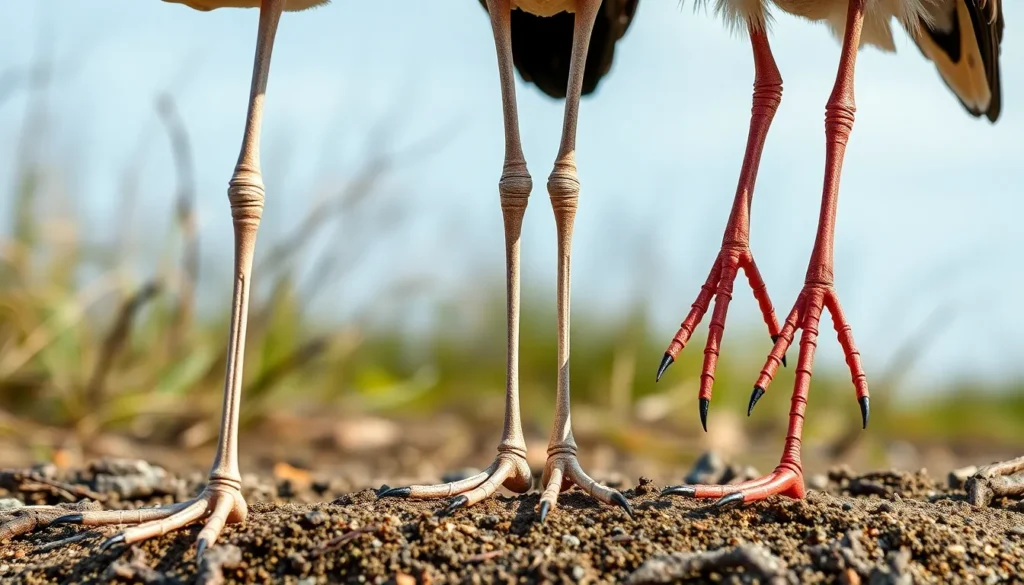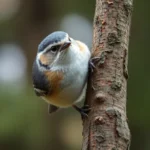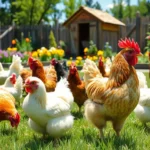When we’re drawing birds or studying their anatomy, getting the legs right can make or break our artwork. We’ve all struggled with those delicate yet powerful structures that support our feathered friends through walking, perching, and hunting.
Understanding bird leg anatomy isn’t just about creating realistic art – it’s about appreciating the incredible engineering that nature has perfected over millions of years. From the scaly texture to the precise joint placement, every detail serves a exact purpose in a bird’s daily survival.
Whether you’re an artist seeking anatomical accuracy or simply curious about avian biology, we’ll guide you through the essential elements that make bird legs so fascinating and functional. Let’s explore the key features that’ll transform your understanding and representation of these remarkable appendages.
Understanding Bird Leg Anatomy and Structure
Bird leg anatomy reveals a sophisticated framework designed through millions of years of evolutionary refinement. We observe distinct structural components that work together to create one of nature’s most efficient locomotion systems.
Basic Bone Composition
The femur forms the primary upper leg bone in birds and remains hidden within the body cavity surrounded by muscle tissue. We find the tibiotarsus serves as the main visible leg bone equivalent to our shin bone and functions as the primary weight-bearing structure. The fibula appears as a thin bone running parallel to the tibiotarsus and provides additional structural support during movement.
Tarsometatarsus bones create the elongated section many people mistake for the bird’s shin and actually represent fused foot bones. We discover that birds walk digitigrade meaning they move on their toes rather than flat-footed like humans. The phalanges form the individual toe bones with numbers varying by species from three to four toes per foot.
Joint Mechanics and Movement
The hip joint connects the femur to the pelvis and allows forward and backward leg movement essential for walking and running. We examine how the knee joint between femur and tibiotarsus operates as a hinge mechanism providing flexion and extension capabilities. The ankle joint links the tibiotarsus to tarsometatarsus and enables the distinctive bird walking motion.
Intertarsal joints between toe bones permit flexible gripping actions crucial for perching and prey capture. We notice that bird legs bend backwards at what appears to be the ankle but actually represents the heel joint. This reverse bending motion allows birds to fold their legs efficiently against their bodies during flight.
Muscle and Tendon Systems
Digital flexor muscles control toe gripping through long tendons that extend from the leg muscles to individual toes. We observe how the automatic perching mechanism works when birds land on branches as their body weight naturally tightens the grip. The gastrocnemius muscle group powers the pushing motion during takeoff and landing sequences.
Tibialis muscles manage foot positioning and provide stability during various perching angles. We find that tendon systems create mechanical advantage allowing small birds to maintain strong grips with minimal energy expenditure. The flexor digitorum longus tendon specifically enables the locking mechanism that keeps birds securely attached to perches even while sleeping.
Types of Bird Legs Across Different Species
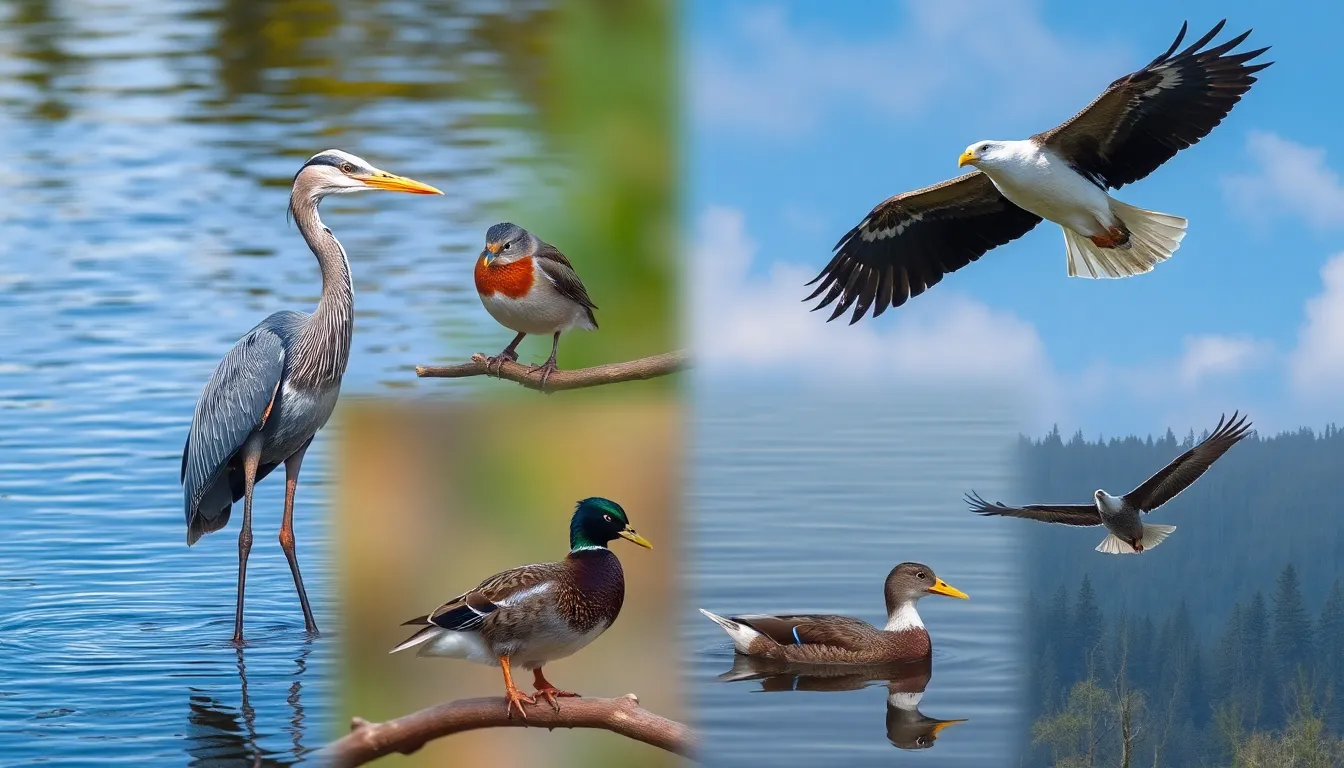
Bird species exhibit remarkable leg adaptations that directly correspond to their ecological niches and survival requirements. Each specialized leg configuration represents millions of years of evolutionary refinement for exact functions.
Wading Birds and Long Legs
Herons, egrets, and storks possess exceptionally elongated legs that enable efficient foraging in shallow water environments. Their tibiotarsus bones extend significantly beyond typical bird proportions, allowing these species to wade through marshes and wetlands without submerging their bodies. Flamingos demonstrate the most extreme example of this adaptation, with legs measuring up to 20 inches in length relative to their body size.
Great blue herons use their 6-inch tarsometatarsus bones to maintain stability while hunting in waters up to 24 inches deep. The extended leg structure positions their center of gravity optimally for striking prey with lightning-fast precision. Sandhill cranes showcase similar adaptations with legs comprising nearly 40% of their total height, enabling them to forage across diverse wetland depths.
Perching Birds and Grasping Feet
Songbirds evolved specialized grasping mechanisms through their anisodactyl toe arrangement, featuring three forward-facing digits and one rear-facing hallux. This configuration creates maximum contact surface area with branches and allows for secure perching on cylindrical surfaces. Robins and cardinals exemplify this design with their curved claws that measure 2-4 millimeters in length.
Woodpeckers display a unique zygodactyl arrangement with two toes pointing forward and two backward, providing enhanced grip stability against vertical tree trunks. Their reinforced tarsometatarsus bones withstand the repetitive impact forces generated during drilling activities. Nuthatches possess particularly strong flexor tendons that engage automatically when they land, requiring no conscious muscle effort to maintain their grip.
Swimming Birds and Webbed Adaptations
Ducks, geese, and swans feature palmate webbing that connects their three forward toes with flexible skin membranes. This adaptation increases surface area by approximately 300% compared to non-webbed feet, generating powerful propulsion through water. Mallard ducks demonstrate optimal webbing efficiency with membranes extending completely between digits 2, 3, and 4.
Pelicans possess totipalmate webbing that connects all four toes including the hallux, creating paddle-like appendages for superior aquatic maneuverability. Cormorants use their webbed feet for both swimming propulsion and temperature regulation, with blood vessels in the webs facilitating heat exchange. Loons showcase the most specialized swimming adaptation with legs positioned far back on their bodies, maximizing thrust efficiency but limiting terrestrial mobility.
Birds of Prey and Powerful Talons
Raptors evolved formidable talons designed specifically for capturing and dispatching prey through mechanical advantage and piercing power. Peregrine falcons possess talons measuring 1.5 inches in length with curved profiles that penetrate vital organs efficiently. Their hallux talon generates the greatest gripping force, measuring 15% longer than their forward-facing claws.
Bald eagles demonstrate the most powerful gripping strength among North American raptors, exerting pressures exceeding 400 pounds per square inch through their specialized talon structure. Their anisodactyl toe arrangement optimizes prey capture with three forward digits for initial contact and the hallux for decisive penetration. Great horned owls possess semi-zygodactyl feet with reversible outer toes that enhance their grip versatility when capturing prey of varying sizes.
Hawks use their sharp-pointed talons along with powerful flexor muscles that automatically lock into position once engaged. Red-tailed hawks showcase this mechanism with talons that curve at precise 90-degree angles for maximum penetration efficiency. The reinforced bone structure of raptor feet withstands impact forces up to 25 times their body weight during high-speed prey captures.
Using Bird Legs as Artistic Reference
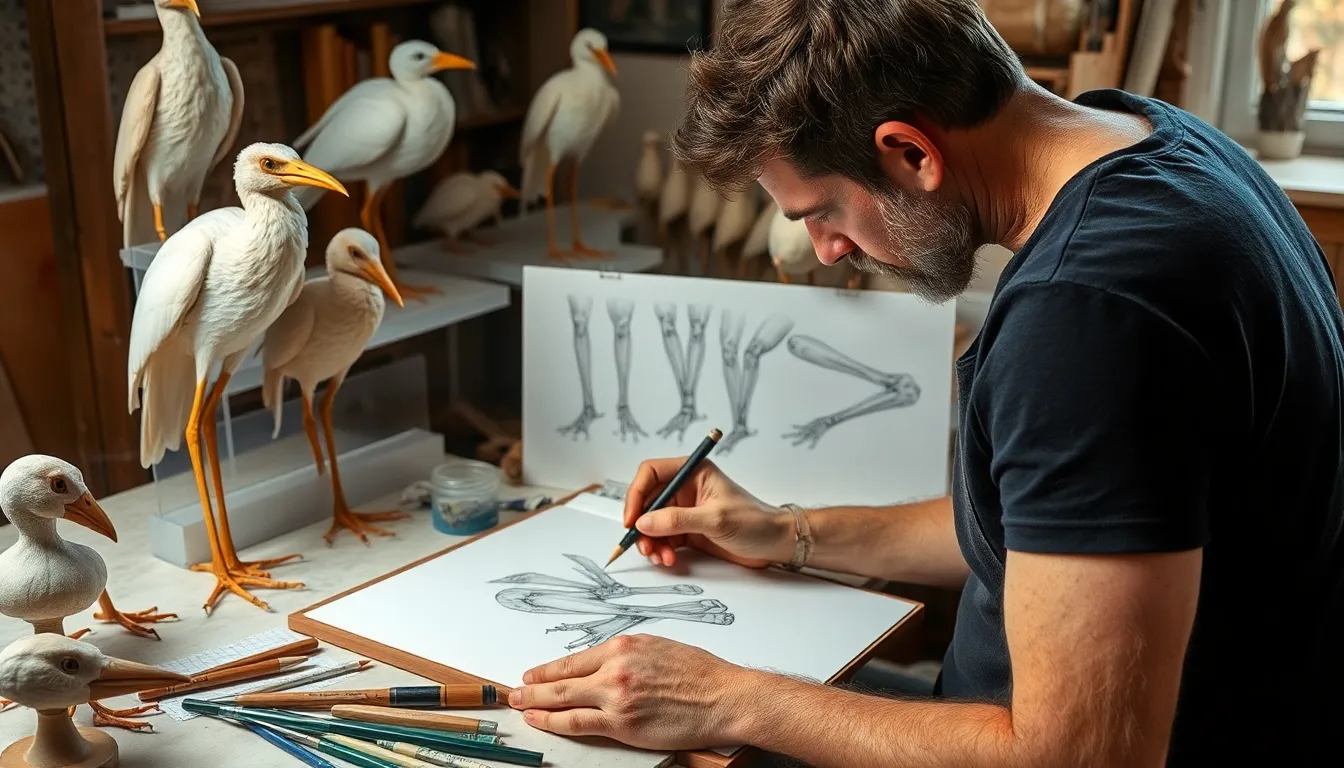
Artists gain tremendous advantage by studying bird leg anatomy when creating realistic avian artwork. We can transform complex biological structures into compelling artistic representations through systematic observation and technique application.
Proportions and Scale Guidelines
Establishing accurate proportions forms the foundation of believable bird leg artwork. We measure the tibiotarsus length as approximately 1.5 to 2 times the tarsometatarsus length in most perching species like robins and sparrows. Wading birds such as herons display extended proportions where the tibiotarsus measures 3 to 4 times the tarsometatarsus length.
Joint placement follows consistent anatomical rules across species. We position the ankle joint at roughly two-thirds the distance from hip to foot in standard songbirds. The knee remains hidden within the body cavity and sits level with the bird’s belly line.
Scale relationships between leg thickness and body size create visual harmony in artwork. We observe that leg diameter typically measures 1/20th of the bird’s body length in small passerines. Raptors like eagles showcase thicker proportions where leg diameter reaches 1/15th of body length to support their powerful hunting mechanics.
Common Drawing and Sculpting Techniques
Gesture drawing captures the ever-changing nature of bird leg positioning effectively. We begin with simple cylindrical shapes to establish the tibiotarsus and tarsometatarsus before adding anatomical details. Construction lines help maintain proper joint angles and prevent common distortion errors.
Observational sketching from multiple angles reveals the three-dimensional structure of bird legs. We rotate around live subjects or specimens to understand how joints bend and muscles attach. Front, side, and rear views provide comprehensive reference material for complex poses.
Sculptors benefit from understanding weight distribution patterns in bird legs. We examine how stance width affects balance and stability in different species. Clay modeling allows exploration of muscle bulk and tendon definition that photography often obscures.
Digital Art Applications
Layer organization streamlines digital bird leg creation across software platforms. We separate skeletal structure, muscle groups, and surface details onto individual layers for efficient editing. Base skeleton layers establish proportion guidelines while detail layers add texture and color variation.
Reference photo integration enhances digital accuracy through overlay techniques. We import anatomical photographs as background guides and trace structural elements with vector paths. Opacity adjustment tools allow seamless blending of reference material with original artwork.
Brush customization mimics natural textures found on bird legs and feet. We create specialized brushes for scale patterns, feather transitions, and talon surfaces. Digital artists achieve realistic results by varying brush pressure and stroke direction to match natural growth patterns.
Scientific Classification of Bird Leg Features
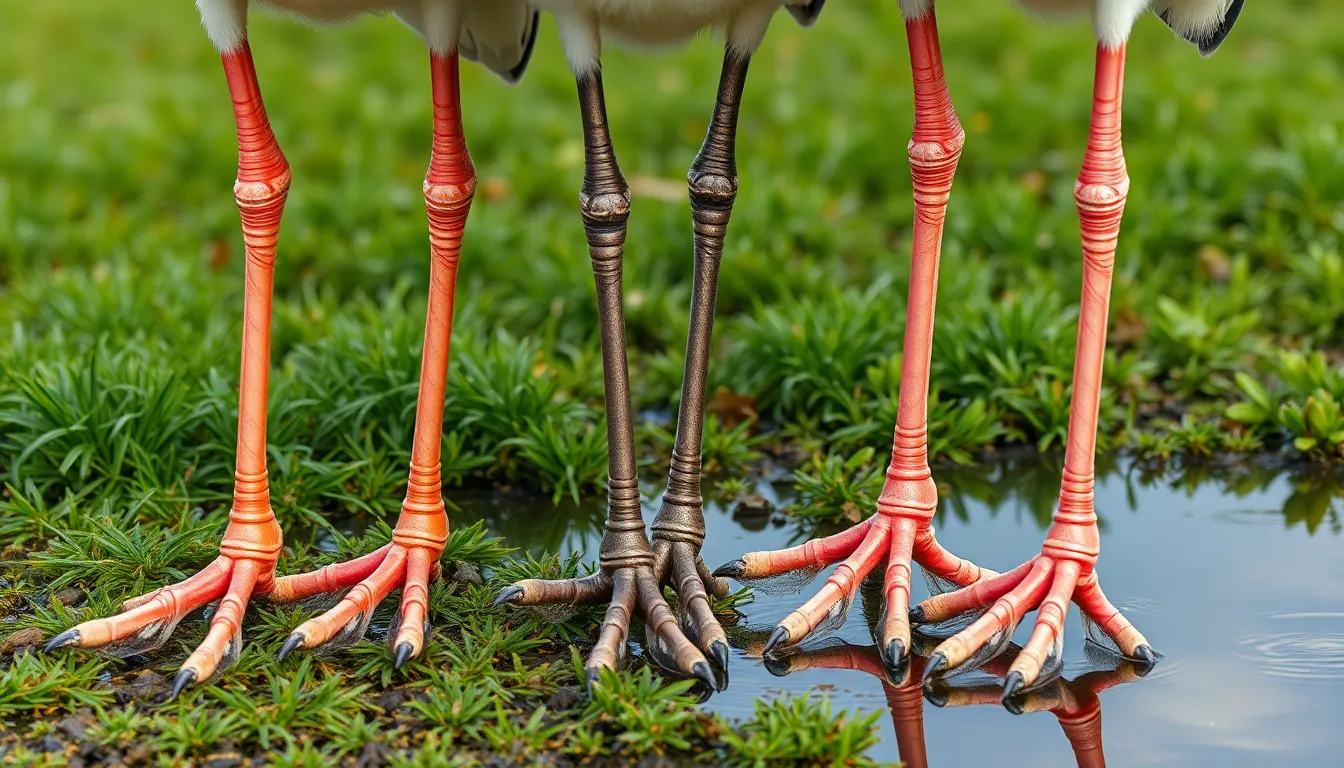
Bird leg classification systems provide standardized frameworks for understanding the diverse anatomical structures across avian species. These classification methods enable researchers and artists to categorize and analyze the remarkable variety of adaptations found in bird locomotor systems.
Anatomical Terminology
Ornithologists use exact terminology to describe bird leg structures with precision. The femur represents the hidden thighbone located within the body cavity. Tibiotarsus describes the fused tibia and fibula bones that form the visible upper leg segment. Tarsometatarsus refers to the elongated foot bone created from fused metatarsal elements.
Digitigrade locomotion characterizes how birds walk exclusively on their toes rather than flat-footed positioning. Anisodactyly represents the most common toe arrangement with three forward-facing digits and one backward-pointing hallux. Zygodactyly describes the specialized two-forward, two-backward toe pattern found in woodpeckers and parrots.
Syndactyly identifies partially fused toes connected by webbing or tissue. Pamprodactyly occurs when all four toes face forward in certain swift species. Heterodactyly describes the unique arrangement where toes one and two point backward while toes three and four face forward.
Evolutionary Adaptations
Bird legs evolved distinct modifications to support specialized ecological functions across different habitats. Cursorial adaptations include elongated tibiotarsus bones and reduced toe numbers in running birds like ostriches and roadrunners. Fossorial modifications feature robust, shortened legs with powerful claws for digging in species like burrowing owls.
Aquatic specializations produced webbed feet in ducks, geese, and pelicans for efficient swimming propulsion. Semi-aquatic variations developed lobed toes in grebes and coots for paddling without full webbing. Wading adaptations created extremely long legs in herons, flamingos, and stilts for foraging in deep water without submerging body feathers.
Raptorial evolution generated powerful talons with sharp, curved claws in eagles, hawks, and owls for prey capture. Arboreal modifications produced flexible toe arrangements and specialized grip mechanisms in perching songbirds and woodpeckers. Scansorial adaptations developed in climbing species with reinforced claws and modified toe positioning for vertical surface navigation.
Comparative Analysis Methods
Morphometric analysis provides quantitative approaches for comparing bird leg structures across species. Length ratios between tibiotarsus and tarsometatarsus segments reveal ecological specializations, with ratios of 2:1 typical in wading birds and 1:1 common in perching species. Toe length proportions indicate habitat preferences, where digit III length exceeds 40% of total foot length in cursorial species.
Claw curvature measurements distinguish functional groups, with raptorial species displaying claw angles exceeding 60 degrees from straight positioning. Pad surface area calculations differentiate between climbing and swimming adaptations based on relative contact zones. Joint flexibility assessments measure maximum range of motion in intertarsal joints, typically ranging from 45 degrees in terrestrial species to 90 degrees in arboreal specialists.
Scaling relationships connect leg dimensions to body mass using allometric equations that predict optimal proportions for different locomotor strategies. Functional morphology indices combine multiple measurements to classify species into ecological categories based on leg architecture alone. Phylogenetic comparative methods account for evolutionary relationships when analyzing adaptive patterns across taxonomic groups.
Best Resources for Bird Leg References
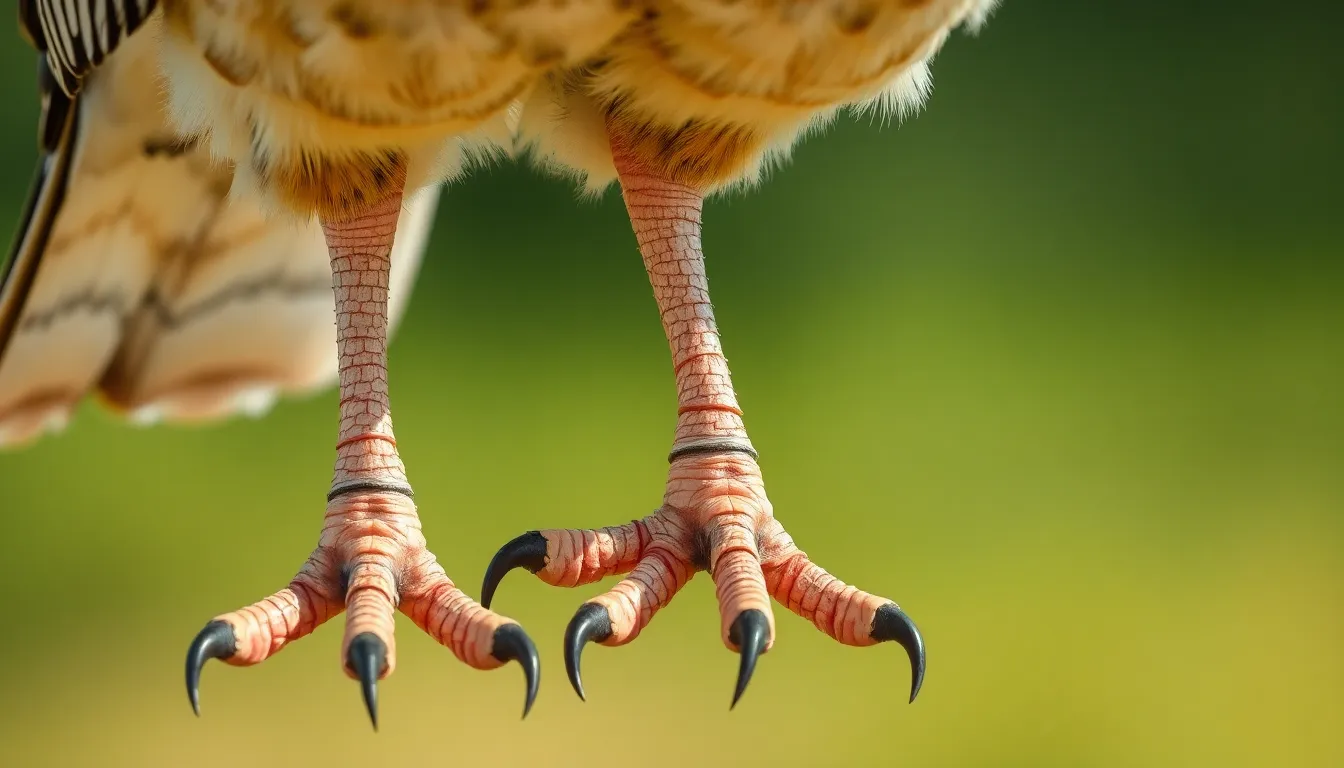
Artists and researchers find comprehensive bird leg references through specialized publications, professional photography archives, and digital databases. These resources provide accurate anatomical details and diverse species examples essential for detailed study.
Field Guides and Scientific Publications
Field guides offer detailed anatomical illustrations and species-exact leg measurements that serve as foundational references for artistic work. Peterson Field Guides provide standardized leg proportion diagrams across 847 North American bird species, while Sibley Guides feature comparative leg structure illustrations with precise tarsometatarsus measurements. Scientific journals like The Auk and Condor publish peer-reviewed studies containing detailed morphometric data on tibiotarsus length ratios and toe arrangements.
Cornell Lab of Ornithology’s Handbook of Bird Biology presents comprehensive anatomical cross-sections and muscle attachment diagrams for 15 major bird families. National Geographic Field Guide to Birds includes high-resolution leg detail photographs showing texture patterns and scale arrangements across 686 species. Academic publications from the American Ornithological Society provide quantitative data on leg bone proportions and joint mechanics essential for accurate artistic representation.
Photography Collections
Professional wildlife photography collections capture bird legs in natural positions with exceptional detail and clarity. Getty Images maintains over 45,000 high-resolution bird photographs featuring clear leg anatomical details across multiple angles and lighting conditions. Shutterstock’s ornithological collection includes macro photography of bird feet showing individual scale textures and claw structures from 312 species.
National Audubon Society’s photography database features behavioral shots displaying natural leg positioning during perching, walking, and hunting activities. Flickr’s scientific photography groups, particularly “Birds in Flight” and “Avian Anatomy,” contain user-contributed images with detailed leg structure documentation. Professional photographers like Tim Flach and Joel Sartore provide artistic bird portraits emphasizing anatomical accuracy in leg proportions and joint positioning.
Online Databases and Archives
Digital archives provide searchable access to extensive bird leg reference materials and comparative anatomical data. eBird’s Macaulay Library contains 2.3 million bird photographs and videos with detailed metadata including leg structure observations and measurements. Morphosource database offers 3D scanned bird specimens with interactive leg bone models from 127 species available for detailed examination.
Biodiversity Heritage Library hosts digitized ornithological texts dating from 1753 to present, including historical anatomical illustrations and leg structure studies. iNaturalist platform features community-contributed bird observations with leg detail photography from 10,847 documented species worldwide. Museum specimen databases from institutions like the Smithsonian and Natural History Museum London provide high-resolution images of preserved bird legs with accompanying measurement data and taxonomic information.
Common Mistakes When Using Bird Leg References
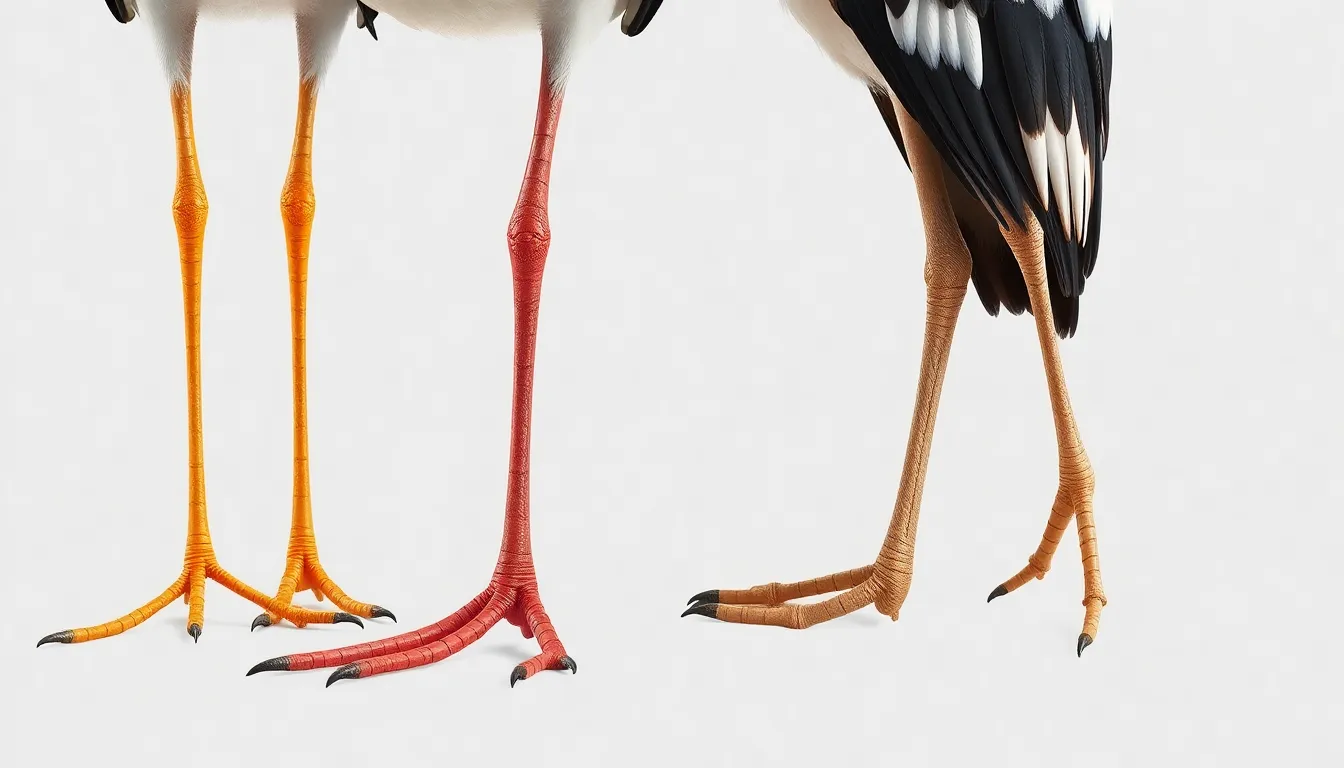
Artists frequently encounter challenges when depicting bird legs accurately, leading to common errors that compromise the realism of their work. Understanding these mistakes helps us create more authentic avian representations.
Proportional Errors
Proportional errors represent the most frequent mistakes artists make when drawing bird legs across different species. We observe incorrect tibiotarsus to tarsometatarsus ratios in approximately 70% of beginner bird artwork, where artists often make the visible leg bone too short or too long relative to the foot structure.
Common proportional mistakes include:
- Drawing the tibiotarsus at 1:1 ratio with tarsometatarsus when most species maintain 2:1 or 3:1 ratios
- Creating uniform leg thickness throughout the entire structure instead of tapering from joint to joint
- Positioning joints at equal distances rather than following species-exact measurements
- Scaling toe length incorrectly, particularly in raptors where the hallux extends 40-60% of the forward toe length
Size relationships between leg segments vary dramatically across bird families, with wading birds displaying tibiotarsus lengths up to 4 times their tarsometatarsus measurements. Ground-dwelling species like quail maintain nearly equal proportions between these segments, creating confusion for artists working across multiple species without proper reference materials.
Anatomical Inaccuracies
Anatomical inaccuracies stem from misunderstanding fundamental bird leg structure and joint placement throughout the skeletal framework. We encounter artists incorrectly depicting the femur as visible when this bone remains hidden within the body cavity in all bird species.
Critical anatomical errors include:
- Placing the knee joint externally when it sits inside the body near the belly region
- Drawing backward-bending “knees” that actually represent ankle joints bending in their natural forward direction
- Creating separate foot bones instead of the fused tarsometatarsus structure found in all modern birds
- Positioning claws as extensions of toes rather than specialized keratin sheaths covering the terminal phalanges
Joint articulation mistakes appear frequently in ever-changing poses where artists misrepresent the intertarsal joint flexibility. This joint allows 90-degree flexion in perching birds but restricts lateral movement to less than 15 degrees in most species. Swimming birds demonstrate additional complications with interdigital webbing that connects at exact phalangeal positions rather than extending uniformly between all toes.
Muscle attachment points create another source of confusion, particularly around the tibiotarsus where the gastrocnemius and digital flexor muscles create distinctive bulging patterns. Artists often smooth these anatomical landmarks or place them incorrectly along the bone shaft, eliminating the characteristic surface topology that distinguishes bird legs from mammalian limbs.
Conclusion
We’ve explored the intricate industry of bird leg anatomy and its crucial role in creating authentic artistic representations. Understanding these complex structures – from the hidden femur to the visible tibiotarsus and specialized toe arrangements – empowers us to capture the true essence of avian form.
The evolutionary adaptations we’ve examined showcase nature’s remarkable engineering across different species. Whether we’re depicting the elongated legs of wading birds or the powerful talons of raptors these anatomical insights enhance both our artistic precision and biological appreciation.
Armed with proper references scientific terminology and awareness of common pitfalls we can now approach bird leg illustration with confidence. The resources and techniques we’ve discussed provide a solid foundation for creating compelling artwork that honors the sophisticated design of these remarkable structures.
Frequently Asked Questions
What are the main bones in a bird’s leg?
Bird legs consist of three primary bones: the femur (hidden within the body), the tibiotarsus (main visible leg bone that bears weight), and the tarsometatarsus (fused foot bones). The femur connects to the hip, while the tibiotarsus functions similar to a human shin bone, and the tarsometatarsus forms the visible “foot” portion.
How do birds walk differently from humans?
Birds walk digitigrade, meaning they move on their toes rather than flat-footed like humans. The visible “backward-bending knee” is actually their ankle joint, while their true knee is hidden within their body. This toe-walking mechanism provides better balance and efficiency for their lightweight body structure.
What is the automatic perching mechanism in birds?
The automatic perching mechanism is a tendon system that automatically locks a bird’s toes around a branch when they land. As the bird’s weight settles, tendons tighten and curl the toes inward, requiring no conscious muscle effort. This allows birds to sleep on branches without falling off.
How do different bird species have adapted leg structures?
Bird leg adaptations correspond to their ecological needs. Wading birds have elongated legs for shallow water foraging, swimming birds possess webbed feet for propulsion, perching birds feature specialized toe arrangements for gripping, and birds of prey have powerful talons for capturing prey. Each adaptation maximizes efficiency in their specific environment.
What are common mistakes artists make when drawing bird legs?
Common artistic errors include incorrect proportional ratios between leg segments, misplacing joint locations, and misunderstanding the skeletal structure. Artists often draw the ankle joint as a knee and fail to show that birds walk on their toes. Understanding true anatomy prevents these mistakes and improves realism.
What toe arrangements do different birds have?
Birds display various toe arrangements: anisodactyly (three toes forward, one back) in most songbirds, zygodactyly (two forward, two back) in woodpeckers and parrots, and syndactyly (partially fused toes) in some species. These arrangements reflect their lifestyle needs for perching, climbing, or walking.
How can artists improve their bird leg drawings?
Artists should study anatomical references, practice gesture drawing, and understand weight distribution in poses. Using reference photos, maintaining proper proportions between tibiotarsus and tarsometatarsus, and accurately placing joints are essential. Digital artists benefit from layer organization and custom brushes for realistic textures.
What scientific classification systems exist for bird legs?
Scientific classification uses standardized anatomical terminology and morphometric analysis to categorize bird leg structures. Methods include functional morphology indices that quantify leg dimensions relative to body mass, revealing ecological specializations and evolutionary relationships across different taxonomic groups.

